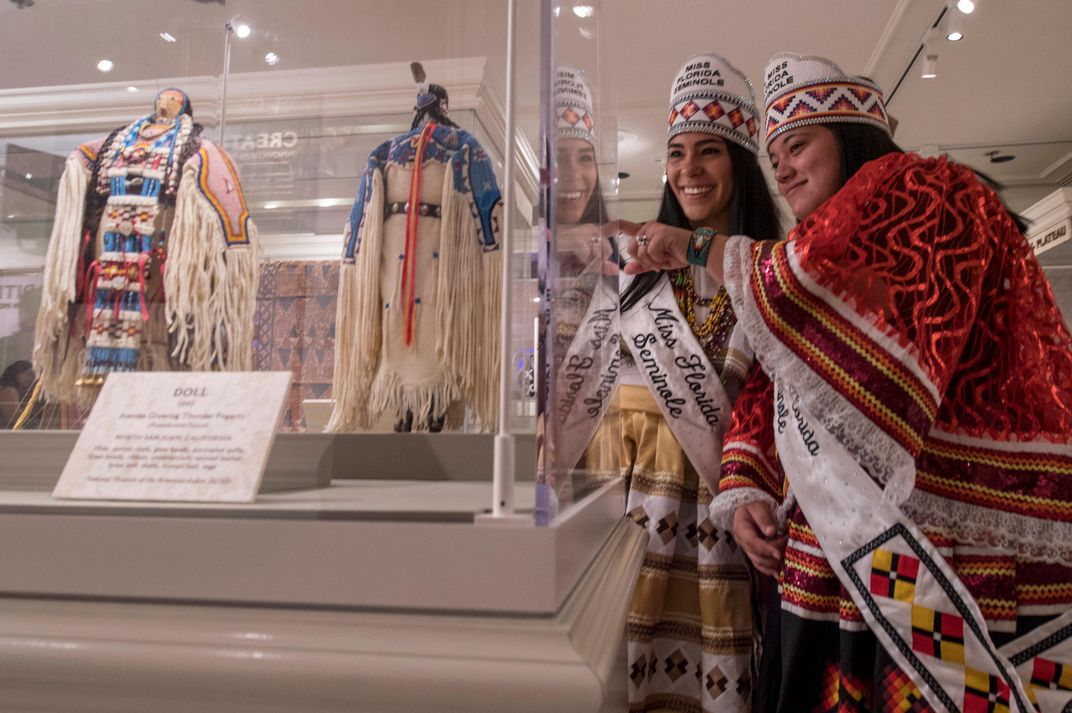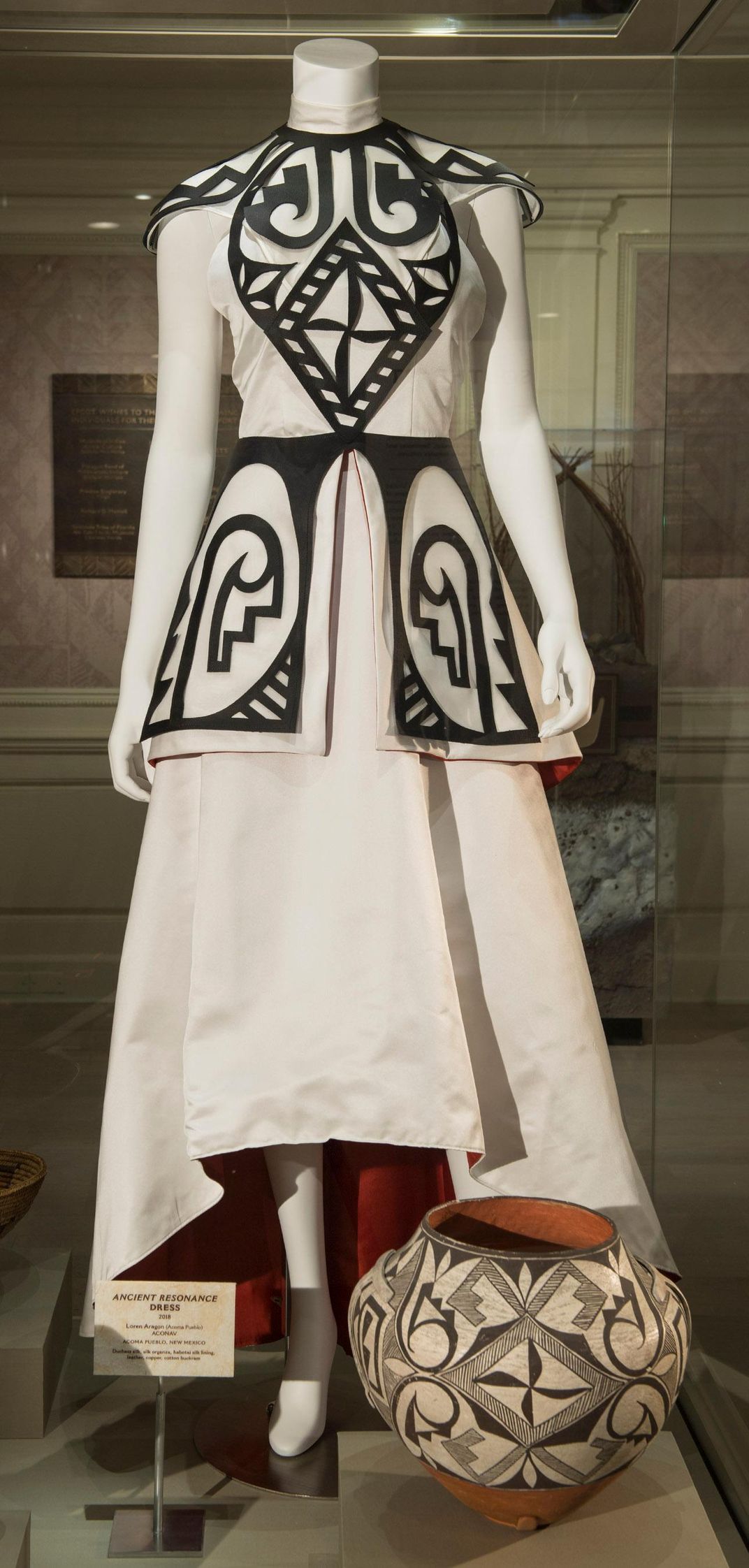Epcot Just Got a New Smithsonian Museum Exhibition
Worlds apart yet sharing so much, the two vacation destinations collaborate to bring scholarship and authenticity to Disney audiences
/https://tf-cmsv2-smithsonianmag-media.s3.amazonaws.com/filer/97/02/9702fa43-c7cd-4abe-8265-bfe065c93196/0727zs_0077kp.jpg)
“Staid and stodgy.” “Essentially very dull.” Those are the phrases used to describe the Smithsonian museums in the 1960s by Secretary S. Dillon Ripley at the time that he took the helm of the Smithsonian Institution. To enliven the place, he launched a bid to bring concerts and festivals to the National Mall, changing the very culture of the Institution. At the time, critics warned that this fusion of entertainment and education would negatively impact the Institution and its mission, rendering it “an ivy-covered Disneyland.”
Certainly, it can be said that the Smithsonian and the Disney are similar in many ways. Both feature a castle and a carousel. Both are vacation destinations on the bucket list of many American and international travelers. Both function (in different ways) as places for the dissemination and negotiation of the American identity and national narrative.
But Dillon’s critics missed the point in suggesting that educators (the Smithsonian) borrowing from the skill set of entertainers (Disney) was an inherently bad idea that would lead to one taking over the other. Both rely heavily on storytelling to create certain moods and transport visitors to different places and times in service of their goals. At Disney parks, the main goal of this storytelling is entertainment, while at the Smithsonian the main goal is education, but elements of both are present in the telling of any good story. The Smithsonian and Disney borrowing from one another’s experiences and strengths can in fact lead to better products for both.
A new exhibition titled “Creating Tradition: Innovation and Change in American Indian Art,” and marking a groundbreaking Smithsonian and Disney collaboration, recently opened at the American Heritage Gallery at Walt Disney World’s Epcot in Orlando, Florida. The show makes evident in a tangible way that scholarship and authenticity can enhance entertainment—and vice versa.
“We get tens of millions of visitors at the Smithsonian museums in Washington and New York,” says Kevin Gover (Pawnee), director of the National Museum of the American Indian, “but the reality is that a great many people from around the world will never visit a Smithsonian, and a great many of those people who will never visit the Smithsonian will visit Disney World, and we’re hoping to give them just a little taste of what we do at the Smithsonian here at Disney World.”

At Epcot, the American Adventure pavilion plays host to a theater show where Audio-Animatronic figures of Benjamin Franklin and Mark Twain take viewers on a sweeping, 30-minute, Disney-style romp through the American narrative. Just outside the doors of the theater, the American Heritage Gallery offers visitors an opportunity to delve a bit deeper into the historical context of the narrative presented on the stage. The new exhibition, “Creating Tradition,” highlights historical and contemporary American Indian art and cultures. It features more than 80 objects, representing 40 tribal nations from seven geographic regions across North America selected from the collections of the Museum of Indian Arts and Culture in New Mexico and the Smithsonian's National Museum of the American Indian in Washington, D.C.
According to Van Romans, who in 1980s as executive director for cultural affairs at Walt Disney Imagineering originated the idea of the exhibit galleries that dot the 11 countries represented at Epcot, sharing different traditions and cultures from within the United States was exactly why the gallery was created. Romans, who currently serves as the President of the Fort Worth Museum of Science and History, says Epcot’s American Heritage Gallery offers Disney an extra opportunity to help tell the full story of America. “Hopefully it’s a story about our own diversity and our own sense of who we are as a country,” he says, adding that in creating the gallery, he knew that since the existing show at American Adventure was already “so powerful and so wonderfully told” that the addition of “important artifacts and art would help tell that story, and put an exclamation point inside the show environment.”
By opening an exhibition of Native traditions inside of Epcot, Disney, the Smithsonian, and the Museum of Indian Arts and Culture are placing native cultures at the symbolic heart of a more inclusive national narrative. Disney has long drawn inspiration from and sometimes transformed American history in its own nostalgia-tinged image, one that has drawn criticism, with its sometimes idealized imaginings.
Disney theme parks are filled with potent symbols of Americana and its film studios have long produced movies that glorified the American past with an optimistic sentiment that holds great appeal for many audiences. In short, they are criticized for not having enough “education” in their “entertainment.”
The Smithsonian, too, wrestles with presenting the past, making difficult decisions about which stories should be included and how to synthesize and deliver complex histories in a manner that is both educational and real. Their struggle is the opposite—how to privilege education while also delivering enough entertainment to keep visitors engaged.

“The American Experience begins with the American Indians who have always been here,” Gover says. “This gallery helps to convey not only that there were a great many Indians and they were very different one from another, but also that they’re still here.” Gover emphasized the meaning of the exhibition’s location: “Our creative traditions are taking their place-literally, here at Epcot-alongside the rest of the world.”
Within the exhibition objects dating from as early as the 1800s are interwoven and juxtaposed with objects crafted as recently as this year to emphasize the way both continuity and change mark the history and future of American Indian arts. A Sicangu Lakota girl’s dress from around 1900 complements a dress made in 2015 by designer Bethany Yellowtail (Apsáalooke [Crow]/Northern Cheyenne). The comparison of the dresses illustrates how women in Plains societies have been making clothing for centuries, and while materials and styles have changed, the patterns, inspiration and attention to detail have not. In other items, materials remain consistent over the decades while forms change. A tea cozy created by Debra K. Box (Southern Ute) in 2012 is fashioned from traditional materials such as animal hide, silk cloth, cotton cloth and glass beads, quite similar to those used to make the 1880s Salish cradleboard also on view nearby.
Three interactive kiosks offer a chance to hear directly from a few of the artists discussing their work and how their cultural traditions have impacted their art. Fashion designer Loren Aragon (Acoma Pueblo) explains his influences and how cultural references permeate his designs. His 2018 Ancient Resonance dress (2018), a white gown with striking black patterns, resonates with similar designs found in traditional Acoma pottery, such as the jar nearby (ca. 1900). Visitors can see how the two items share a striking connectivity.
As guests move through the exhibition, they are enveloped by a soundtrack of works by Native musicians, further heightening the sense of both continuity and change in American Indian cultures. Native languages are blended with contemporary music styles, while some traditional songs are given a hip-hop beat. Standing in the gallery and taking in the sight of the objects along with the sounds of Native musicians, one can truly feel the way in which American Indian art is both historic and modern, ancient and yet timeless.
This exhibition can be read as a sign that America is ready for and has already begun a major shift in the national narrative at large towards more fully recognizing Native histories and life ways as part of a collective American identity alongside and equal to those that have dominated for so long. Some of Disney’s most recent blockbuster animated films, such as Moana and Coco, in particular, have incorporated indigenous traditions to great success. A design has been selected for a future National Native American Veterans Memorial on the National Mall in Washington, D.C. that officially acknowledges the service of American Indian, Alaska Native and Native Hawaiian members of the armed forces. And the 2018 midterm elections is seeing a record breaking number of Native Americans running for office. One hopes that all of this points to greater integration of American Indian and other First Nation peoples into the overarching American narrative.
Della Warrior (Otoe-Missouria), director of the Museum of Indian Arts and Culture, notes that while the current exhibition serves as a visual voice of nearly ten percent of the Native tribes in North America, it also opens the door to the sharing of many more voices over the exhibition’s five-year tenure. There will certainly be many opportunities for those stories to be shared, for as visitors queue for the next showing of the “American Adventure” at Epcot, they stand directly in front of the American Heritage gallery, where the allure of beautifully arranged objects is hard to resist.
Now, with the installation of “Creating Traditions,” those guests are beginning their American Adventure with Native peoples, the way the American story truly began.
“Creating Tradition: Innovation and Change in American Indian Art,” curated by the Smithsonian's Emil Her Many Horses and Tony Chavarria from the Museum of Indian Arts and Culture, is on view at Disney’s Epcot through 2023.
/https://tf-cmsv2-smithsonianmag-media.s3.amazonaws.com/accounts/headshot/Bemis_Bethanee_2.jpg)
/https://tf-cmsv2-smithsonianmag-media.s3.amazonaws.com/accounts/headshot/Bemis_Bethanee_2.jpg)